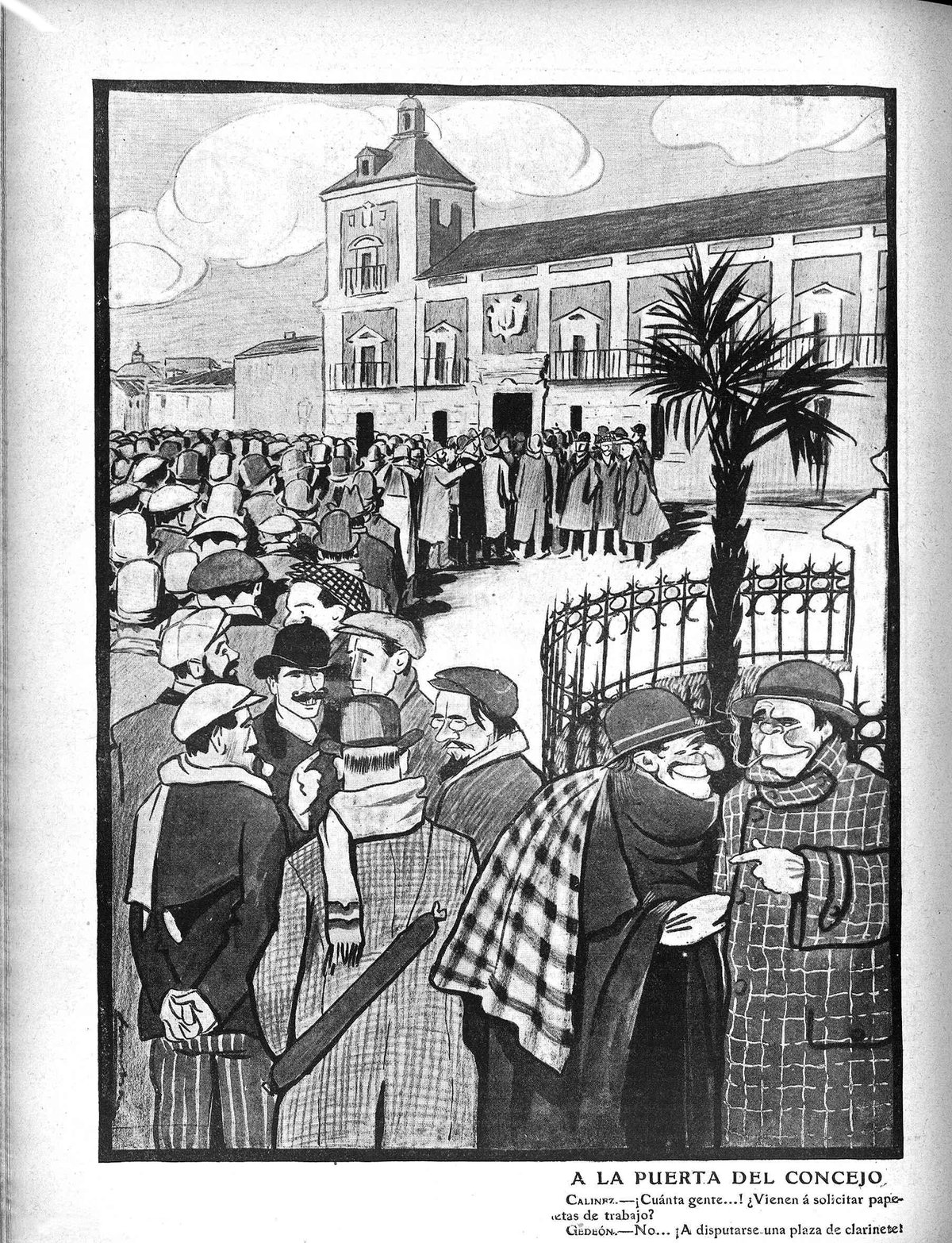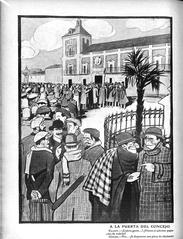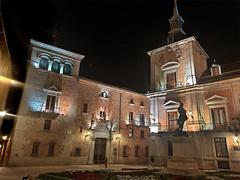
Plaza de la Villa Madrid: Visiting Hours, Tickets, and Historical Sites Guide
Date: 15/06/2025
Introduction
Plaza de la Villa, situated in the heart of Madrid’s historic center, is a captivating testament to the city’s medieval roots and its transformation into a vibrant European capital. Recognized as one of Madrid’s oldest and most architecturally diverse squares, Plaza de la Villa offers visitors an immersive experience through centuries of history—showcasing Gothic-Mudejar, Renaissance, Plateresque, and Baroque styles. Having served originally as a bustling marketplace and civic hub in the 15th century, it later became the political and administrative nucleus of the city, especially during the Habsburg era. Notable landmarks such as the Torre y Casa de los Lujanes, Casa de Cisneros, and Casa de la Villa frame the square, offering a living narrative of Madrid’s urban and cultural evolution. Today, Plaza de la Villa remains a tranquil retreat and a dynamic cultural space, accessible at all hours and free of charge, with special access to building interiors during tours and events (Explorial; Travel Inti; Segway Tour; whattodoinmadrid.com).
Table of Contents
- Introduction
- Historical Overview
- Visitor Information
- Special Events and Guided Tours
- Photographic Highlights
- Nearby Attractions and Dining
- Practical Tips for Visitors
- Frequently Asked Questions (FAQ)
- Conclusion
Historical Overview
Medieval Origins and Early Development
Plaza de la Villa traces its roots to the late medieval period, emerging in the 15th century as a strategic civic and commercial hub at the intersection of key roads to Toledo and El Pardo (Explorial; Travel Inti). Initially, it served as a marketplace and venue for public celebrations, known first as the “Plaza Mayor” before the larger square by that name was established elsewhere (Exploramonumentos).
Political and Administrative Significance
The mid-15th century marked Plaza de la Villa’s emergence as Madrid’s administrative heart. In 1463, King Enrique IV of Castile’s recognition of Madrid as “The Very Noble and Loyal Village” led to the construction of key municipal buildings, cementing the square’s role in governance and civic life (Explorial). The Habsburg dynasty’s reign in the 16th and 17th centuries further solidified its importance as the focal point of Madrid’s political and urban development (Madrid-Tourist.com).
Architectural Evolution and Key Landmarks
Plaza de la Villa is characterized by an ensemble of historic buildings, each highlighting a distinct phase of Madrid’s architectural evolution (Travel Inti):
- Torre y Casa de los Lujanes (15th century): The oldest civil building in Madrid, this Gothic-Mudejar tower is notable for its horseshoe arch and rich legends, including the imprisonment of King Francis I of France (Madrid Secreto; Travel Inti).
- Casa de Cisneros (16th century): Built in 1537, this Renaissance palace is distinguished by its Plateresque façade and an elevated passageway connecting it to Casa de la Villa (Madrid Secreto).
- Casa de la Villa (17th century): Constructed between 1644 and 1696, Casa de la Villa served as Madrid’s City Hall until 2007 and exemplifies the Herrerian Baroque style (Explorial).
The architectural harmony of the plaza narrates Madrid’s evolution from a medieval marketplace to a modern civic center.
Visitor Information
Visiting Hours
Plaza de la Villa is open to the public 24/7. Guided tours and building interiors, when accessible, usually follow standard daytime hours (10:00 AM–6:00 PM). Check official tourism platforms for updates on special openings.
Tickets and Admission
There is no fee to enter or walk through the square. Some building interiors are accessible only during special tours or events, which may require advance booking and tickets (whattodoinmadrid.com).
Accessibility
The square is largely pedestrian-friendly, though cobblestone surfaces may pose minor challenges for those with mobility issues. Ramps in nearby streets and accessible public transport options (Metro Sol and Opera) facilitate visits.
Travel Tips
- Visit early morning or late afternoon for fewer crowds and optimal lighting.
- Combine your stop with neighboring attractions like Plaza Mayor, the Royal Palace, and Almudena Cathedral.
- Use public transport; parking is limited in the historic center.
Special Events and Guided Tours
Cultural events such as historical reenactments, exhibitions, and municipal celebrations are occasionally held at Plaza de la Villa. Guided tours—available through local operators and tourist centers—offer valuable historical context and access to certain building interiors (Travel Inti; Segway Tour).
Photographic Highlights
- The Gothic-Mudejar Torre y Casa de los Lujanes.
- The elevated passageway connecting Casa de Cisneros and Casa de la Villa.
- The bronze statue of Admiral Álvaro de Bazán, a striking centerpiece by Mariano Benlliure.
- Panoramic views capturing the architectural ensemble.
Nearby Attractions and Dining
Located within walking distance of major sites, Plaza de la Villa is close to the Royal Palace, Almudena Cathedral, and Mercado de San Miguel. Nearby streets offer authentic tapas bars and artisan boutiques, ideal for sampling Madrid’s culinary and cultural offerings (Explorial).
Practical Tips for Visitors
- Best Seasons: Late spring and early fall offer mild weather; winter is festive with seasonal decorations (mypathintheworld.com).
- Footwear: Wear comfortable shoes for cobblestone streets.
- Language: Basic Spanish is helpful, though English is widely understood in tourist areas.
- Restrooms: Available in nearby cafes or public buildings, not in the plaza itself.
- Safety: The area is generally safe; remain mindful of your belongings.
Frequently Asked Questions (FAQ)
Q: What are the visiting hours for Plaza de la Villa?
A: The plaza is accessible 24/7, free of charge. Building interiors may have restricted hours.
Q: Are tickets required to visit?
A: Entry to the square is always free. Tickets may be needed for special events or guided tours.
Q: Is the plaza accessible for wheelchair users?
A: The square is mostly accessible, though cobblestones and some building entrances may require assistance.
Q: Are guided tours available?
A: Yes, various local operators offer guided tours that include Plaza de la Villa.
Q: What’s the best way to get there?
A: Metro stations Sol and Opera are nearby; the plaza is easily reached on foot from other central landmarks.
Conclusion
Plaza de la Villa stands as a preserved architectural and cultural jewel, embodying Madrid’s historical continuity and civic identity. Its unique blend of medieval, Renaissance, and Baroque elements invites visitors to engage deeply with the city’s past in a tranquil yet central setting. Free public access, combined with opportunities for guided tours and cultural events, makes Plaza de la Villa an essential stop for anyone exploring Madrid’s heritage. For a richer experience, plan your visit during quieter times, take advantage of local tours, and explore the surrounding historic district.
For the latest updates on visiting hours, events, and guided tours, download the Audiala app, your companion for real-time information and curated itineraries in Madrid.
References
- Plaza de la Villa, 2023, Explorial
- Plaza de la Villa, 2023, Travel Inti
- Plaza de la Villa Historic Center, 2023, Segway Tour
- Plaza de la Villa Madrid Visiting Hours, Tickets, and Guide, 2024, whattodoinmadrid.com
- Plaza de la Villa Cultural Importance, 2024, Madrid Traveller
- Top Things to Do in Madrid, 2024, Lonely Planet
For more inspiration and planning tools, visit whattodoinmadrid.com and mypathintheworld.com.



































































































